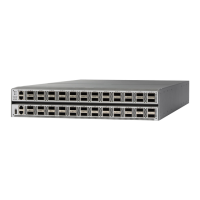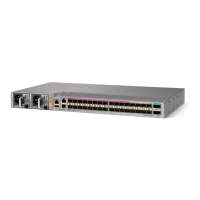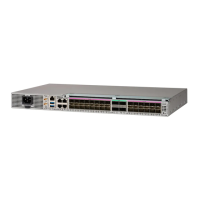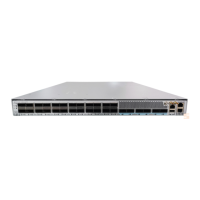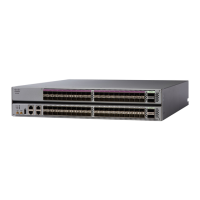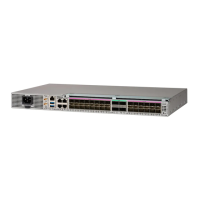vrf-policy
To apply a policy on a per VPN routing and forwarding (VRF) basis, use the vrf-policy command in global
configuration mode. To remove the association of the policy on a VRF, use the no form of this command.
vrf-policy vrf vrf-name address-family {ipv4 | ipv6 } policy type pbr input policy-name
no vrf-policy vrf vrf-name address-family {ipv4 | ipv6 } policy type pbr input policy-name
Syntax Description
Sets the VRF name.
vrf vrf-name
Sets the policy name.
policy type pbr input policy-name
Command Default
No default action.
Command Modes
Policy map class configuration
Command History
ModificationRelease
This command was introduced.Release 6.0.1
Usage Guidelines
This command is supported with sub-mode. This command applies only to the incoming IPv4 packets only.
Use this command to apply a PBR policy on a per VRF basis during the classification and decapsulation of
GRE packets.
Task ID
OperationsTask
ID
read,
write
qos
Examples
This example shows how to apply an already configured policy on a per VRF basis:
/* Configuring a VRF */
RP/0/RP0/CPU0:router(config)# vrf gre-vrf address-family ipv4 unicast
...
/* Configuring a policy */
RP/0/RP0/CPU0:router(config)# policy-map type pbr gre-policy
...
/* Applying the policy on the VRF */
RP/0/RP0/CPU0:router(config)# vrf-policy vrf gre-vrf address-family ipv4 policy type pbr
input gre-policy
Modular QoS Command Reference for Cisco NCS 5500 Series and Cisco NCS 540 Series Routers
48
Congestion Management Commands
vrf-policy
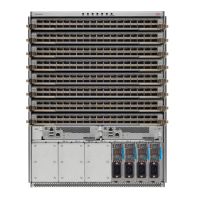
